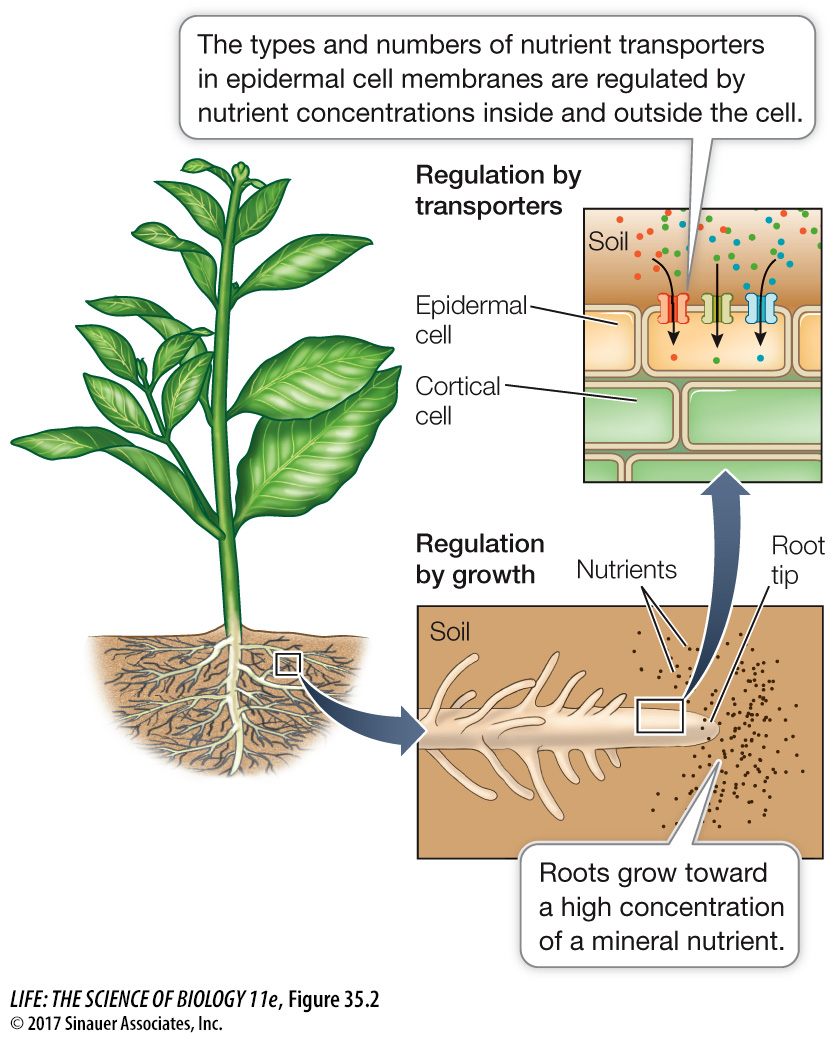Plants rely on growth to find nutrients
As you learned in Chapter 33, plants differ fundamentally from animals in that plants grow throughout their lifetimes. In fact, growth is a plant’s version of movement. For example, roots obtain most of the mineral nutrients plants need. By growing through the soil, roots mine it for new sources of mineral nutrients and water. The growth of stems and leaves helps a plant secure light and carbon dioxide, which in turn allows the roots to continue their growth through the soil. Deficiencies in water or specific mineral nutrients can stimulate plants to grow more roots, to improve the plants’ chances of finding the nutrients they need.
As it grows, a plant—or even a single root—must deal with a variable environment. Animal droppings create high local concentrations of nitrogen. A particle of calcium carbonate may make a tiny area of the soil alkaline, while dead organic matter may make a nearby area acidic. Such microenvironments encourage or discourage the proliferation of a root system and help direct its growth. A major effort is underway to identify the signals in the soil and signaling pathways in the root that result in growth toward a source of nutrients (Figure 35.2).

Figure 35.2 Plants Regulate Their Nutrition Plant roots branch and grow toward nutrients. Nutrients are taken up by transport proteins in the epidermal cell membrane. The number of transporters for a given nutrient can be regulated in response to nutrient availability.
